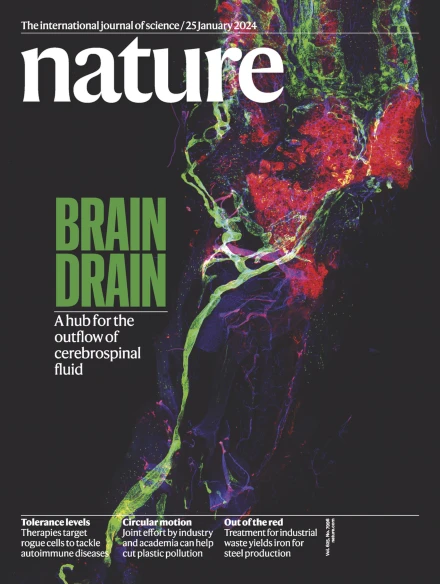Radiative forcing reduced by early twenty-first century increase in land albedo
IF 50.5
1区 综合性期刊
Q1 MULTIDISCIPLINARY SCIENCES
引用次数: 0
Abstract
Surface albedo greatly affects how much energy the Earth absorbs. Intensive human activities and accelerated climate change have altered surface albedo across spatial and temporal scales1–3, yet assessments of the effects of land use or land cover (LULC) and snow variations on land surface albedo are scarce at the global scale. As a result, the global land surface albedo dynamics over recent decades and their corresponding radiative forcing to the climate system remain poorly understood4–9. Here we quantify the individual and combined effects of snow cover dynamics, LULC conversions and non-conversion regions on albedo variations during 2001–2020 and estimate their induced radiative forcing. We show that the negative radiative forcing induced by the global land surface albedo change was −0.142 (−0.158, −0.114) W m−2 over the past two decades. The global snow-free land surface albedo increased by 2.2% (P < 0.001), with a negative radiative forcing of −0.164 (−0.186, −0.138) W m−2 (P < 0.001). The magnitude of this negative forcing is sevenfold larger than the positive forcing induced by snow dynamics, and equivalent to 59.9% of that caused by CO2 emissions from 2011 to 201910. The global radiative forcing due to albedo changes in LULC non-conversion regions is 3.9 to 8.1 times greater than that from LULC conversions. The radiative forcing induced by albedo changes highlights the important role of land surface dynamics in modulating global warming. Effects of snow cover dynamics, land use or land cover conversions and non-conversion regions on albedo variations during 2001–2020 are quantified and their induced radiative forcing estimated, highlighting the role of land surface dynamics in modulating global warming.


辐射强迫因21世纪初陆地反照率的增加而减少
地表反照率对地球吸收的能量有很大影响。密集的人类活动和加速的气候变化已经在时空尺度上改变了地表反照率1,2,3,但在全球尺度上,关于土地利用或土地覆盖(LULC)和积雪变化对地表反照率影响的评估很少。因此,近几十年来全球陆地表面反照率动态及其对气候系统的相应辐射强迫仍然知之甚少4,5,6,7,8,9。在此,我们量化了2001-2020年积雪动态、LULC转换和非转换区域对反照率变化的单独和综合影响,并估算了它们的诱导辐射强迫。结果表明,近20年来全球地表反照率变化引起的负辐射强迫为- 0.142 (- 0.158,- 0.114)W m - 2。全球无雪地表反照率增加2.2% (P <;0.001),负辐射强迫为- 0.164 (- 0.186,- 0.138)wm - 2 (P < 0.001)。这种负强迫的强度是雪动力引起的正强迫的7倍,相当于2011 - 2010年CO2排放引起的正强迫的59.9%。非转换区反照率变化引起的全球辐射强迫是转换区辐射强迫的3.9 ~ 8.1倍。反照率变化引起的辐射强迫突出地表动力学在调节全球变暖中的重要作用。
本文章由计算机程序翻译,如有差异,请以英文原文为准。
求助全文
约1分钟内获得全文
求助全文
来源期刊

Nature
综合性期刊-综合性期刊
CiteScore
90.00
自引率
1.20%
发文量
3652
审稿时长
3 months
期刊介绍:
Nature is a prestigious international journal that publishes peer-reviewed research in various scientific and technological fields. The selection of articles is based on criteria such as originality, importance, interdisciplinary relevance, timeliness, accessibility, elegance, and surprising conclusions. In addition to showcasing significant scientific advances, Nature delivers rapid, authoritative, insightful news, and interpretation of current and upcoming trends impacting science, scientists, and the broader public. The journal serves a dual purpose: firstly, to promptly share noteworthy scientific advances and foster discussions among scientists, and secondly, to ensure the swift dissemination of scientific results globally, emphasizing their significance for knowledge, culture, and daily life.
 求助内容:
求助内容: 应助结果提醒方式:
应助结果提醒方式:


